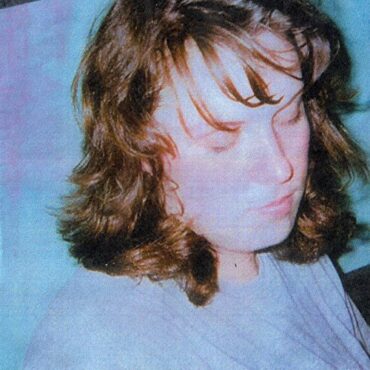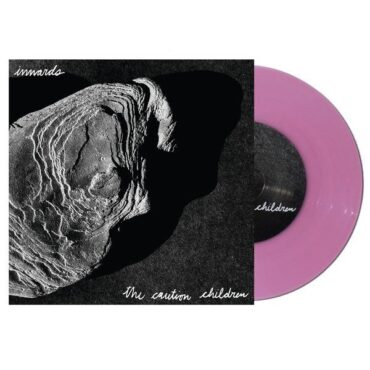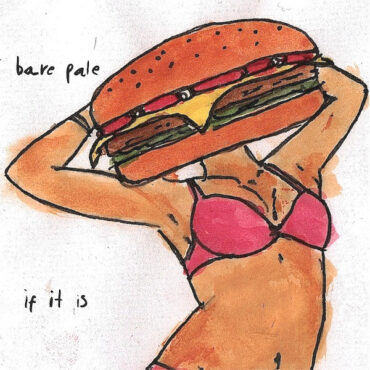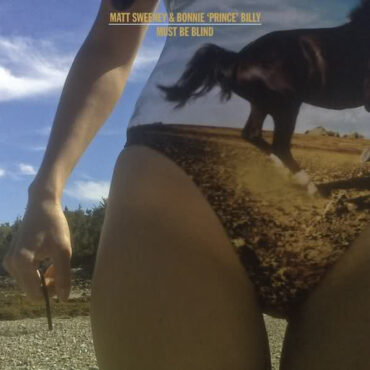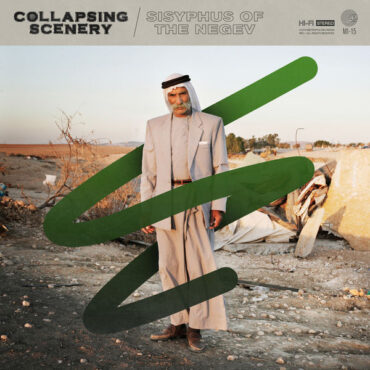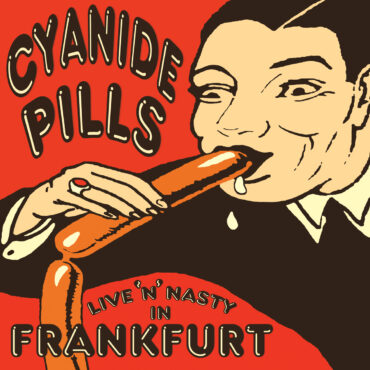JAGJAGUAR

A Brief, Subjective History of Jagjaguwar
E. Deines
Midway through his long, earnest and often very funny essay on the role-playing game Dungeons & Dragons for a September 2006 issue of The Believer, author Paul La Farge proposes that D&D is not a game at all, but rather a ritual.
La Farge notes the marked difference between game and ritual. As games seek to demonstrate how unequal or distinct players and teams are from each other, rituals seek to do the opposite. “Ritual, on the other hand, is the exact inverse: it conjoins, for it brings about a union,” La Farge writes, himself quoting anthropologist Claude Levi-Strauss. “Or in any case an organic relation between initially separate groups.”
Across the twenty-year history of Jagjaguwar, an independent record label named, curiously, using a Dungeons & Dragons character-name-generating computer program, we find this idea of ritual as conjoining practice. We see it early on when Jagjaguwar joins forces with another Midwestern label. We see it in how these labels then find community with other like-minded record labels. We see it in the familial relationships between Jagjaguwar artists. And we see it in collaborations among Jagjaguwar artists.
In the back half of the 1990s, University of Virginia sixth-year senior Darius Van Arman was plumbing the depths of collegiate malaise, finding every odd job and wild-hair interest to keep himself from finishing his undergraduate degree — all while funds from back home outside of Washington D.C. were being severed. He was a music director at UVA’s WTJU, a clerk at Plan 9 Records, art director at Charlottesville, Virginia’s alt-paper C-Ville Weekly, overnight supervisor for an adult-care facility and booking shows at The Tokyo Rose, a basement venue beneath a sushi restaurant in a strip mall, where the likes of Sleater-Kinney, Neutral Milk Hotel, Cat Power, Will Oldham and countless others performed.
“I was in denial about whether I was dropping out of college or not,” said Van Arman.
Van Arman was sharing a house painted “trans-fat yellow with army green trim” in one of Charlottesville’s rougher neighborhoods with roommates Gate Pratt (guitarist in pre-Pavement UVA band Ectoslavia) and David Berman (The Silver Jews).
“Darius was a gentle person who nevertheless took the lead in getting things done among his peers,” Berman, Van Arman’s senior by a few years, wrote of the time. “I don’t think Darius qualifies as a millennial but he embodied several positive qualitative traits I associate with millenials: more kind, more competent, more curious, more worldy, not as quick to judge, better able to work in groups than people my age. He slept late but then he took charge. He couldn’t have filled all those two-to-six a.m. DJ slots [at WTJU] without being a nag.”
A friend, Adam Busch (who also would put music out on Jagjaguwar as Manishevitz), was part of a band making herky-jerky, avant-garde poetic-pop called The Curious Digit. The band needed a label, and Van Arman, using some overtime pay he had just earned courtesy of a blizzard that obliterated Charlottesville, made The Curious Digit’s Bombay Aloo (1996, JAG001) the first release under his new Jagjaguwar label. Shortly thereafter, Richmond band Drunk learned about Jagjaguwar and Drunk member Rick Alverson reached out to Van Arman to see if there was room for one more band on the label.
“I booked Drunk to play at The Tokyo Rose and signed them on the spot,” Van Arman said.
Berman encouraged Van Arman to mail Drunk’s debut, A Spiritual Derby (1996, JAG002) to UK journalist Jennifer Nine, who ended up reviewing the album for Melody Maker.
“Three months later, I got a $350 check from [UK distributor] Cargo to purchase 50 CDs,” Van Arman said. “I thought ‘Oh this is easy.’”
Meanwhile, in the similarly culturally robust college town of Bloomington, Indiana, Chris Swanson—along with his partners Ben Swanson, Jonathan Cargill and Eric Weddle—were also building a record label, namely Secretly Canadian. One of their early signings, songwriter Jason Molina, who performed under his Songs: Ohia moniker, was seeing some humble critical and commercial success.
Van Arman and Chris Swanson began to share “love notes” back and forth about one another’s releases, which for Jagjaguwar included the aforementioned artists, along with artists like Sarah White, South and The Union of a Man And A Woman. Fairly early on in those exchanges, Van Arman suggested a partnership in Jagjaguwar (See: ritual).
“I was working a lot of jobs,” he said. “I needed a partner. When I first asked Chris, he balked. But then he came back and said ‘I’ll partner with you, but you have to move to Bloomington.’”
Darius relocated to Bloomington in 1999, and Jagjaguwar began to find new footing—artistically and organizationally.
Eventually, Van Arman became a partner in Secretly Canadian. Ben Swanson and Cargill joined Van Arman and Chris Swanson in a Jagjaguwar partnership. Each developed a specialty within the company: Van Arman focused on design; Chris Swanson handled the books; Ben Swanson developed the sales & distribution systems; and Cargill focused on marketing and press (Again: ritual.)
“We wanted to be infrastructurally ready for when we had the right record,” Chris Swanson said.
The Bloomington relocation and partnership ushered in a new era of artists that expanded the early, provincial stable—Canadian songwriter and former Eric’s Trip member Julie Doiron, Scottish experimentalist Richard Youngs and Brooklyn avant-psych madmen Oneida, who became an early cornerstone of the label.
“Early on, we would use the phrase sentimental noise to describe Jag artists,” Chris Swanson said. “Dissonant music with an overriding emotion or sentimentality.”
Jagjaguwar introduced their partnership with Oneida via a split 7-inch record with Secretly Canadian artist Songs: Ohia (I’ll say it once more: ritual). The two bands shared a connection to Oberlin College in Ohio.
“I think we signed our contract in a parking lot at SXSW,” said Kid Millions, drummer for Oneida. In email communications with the label, Oneida—ever the cheeky court jesters—would occasionally refer to Jagjaguwar as “The house that Oneida built”.
In 2001, a demo from young, Austin, Texas based folk band Okkervil River came across Chris Swanson’s desk.
“I’d sent demos to every label I knew, and literally nobody else was interested,” said Okkervil River’s chief songwriter Will Sheff. “I remember meeting with Darius at SXSW in Austin, and walking down the street he noticed an Okkervil River sticker on a light pole. He was encouraging and said ‘Look, cool, there you are.’ Little did he know that I had put that sticker there.”
With each Okkervil River release on Jagjaguwar—its debut Don’t Fall In Love With Every One You See (2002), Down The River of Golden Dreams (2003), Sleep and Wake-Up Songs (2004) and then, its breakout critical success Black Sheep Boy (2005), the band’s profile leapt forward.
“Every record doubled the sales of its predecessor,” Chris Swanson said. “So we had the opportunity to really develop the band.”
Interestingly, much of Black Sheep Boy was written at Van Arman’s house in Bloomington when Sheff stayed with him for some months.
“I would sit in a kitchen chair and just write and write and write. I knew it was good,” Sheff said. “I felt like I had a little secret.”
Alongside Okkervil River’s critical and commercial breakout, Jagjaguwar also released the debut album from Vancouver psych outfit Black Mountain, with whom Van Arman and Chris Swanson fell in love while listening on a road trip. The band’s self-titled debut would be Jagjaguwar’s second critical success of 2005 alongside Black Sheep Boy. It’d also propel Black Mountain to an opening slot for Coldplay on a tour throughout which Chris Swanson and Van Arman would trade off tour managing duties.
“We were looking for weirdos that would have some longevity,” Chris Swanson said. “We wanted to release albums that would sound better a couple decades from now. Black Mountain and Okkervil River felt like affirmations that what we were doing could reach a much wider audience.”
Following Black Mountain’s debut, Jagjaguwar would introduce a string of new artists that would see both critical praise and passionate fanship—Baltimore post-post-rock band Wilderness and two Montreal-based artists, The Besnard Lakes and Sunset Rubdown.
In 2007, Jagjaguwar signed Eau Claire, Wisconsin project Bon Iver (lead by Justin Vernon), whose self-recorded art-folk album For Emma, Forever Ago (2008, JAG115) had seen a grassroots groundswell based off just a handful of CD-R copies Vernon was selling at shows.
“We connected quickly with Justin. We spoke the same language,” Chris Swanson said. “We were proud to be a Midwestern label, and he was proud to be a Midwestern artist.”
Even though the music was connecting with a lot of fans prior to the release, Jagjaguwar kept its expectations in check. But then the initial pressing of For Emma, Forever Ago sold out within the first few weeks, and everyone knew something special was happening. For Emma, Forever Ago would go gold in 2012, in the same week Bon Iver’s self-titled follow up album, Bon Iver, went gold. That album, released in June 2011, also led to two Grammy wins for Bon Iver—Best New Artist and Best Alternative Album. During his Grammy’s speech in February 2012, Vernon thanked Jagjaguwar “for having transparency and friendship.”
Vernon also became a center for collaboration among his fellow Jagjaguwar artists (Sharon Van Etten, Lia Ices) and in bringing his collaborative projects to the Jagjaguwar roster (Volcano Choir, GAYNGS).
And with the larger success of Bon Iver, Jagjaguwar continued its evolution into a label with a truly global reach. We see another new era of artists reaching new audiences and critics—Brooklyn’s Van Etten and Small Black; LA’s Foxygen, Portland’s Unknown Mortal Orchestra, Calgary’s Women and Preoccupations, and Asheville-by-way-of-Chicago-by-way of-St. Louis’s Angel Olsen.
Van Etten released her Jagjaguwar debut, Tramp, in 2012 and her true breakout, Are We There, in 2014.
“It was a partnership,” Van Etten said of joining forces with Jagjaguwar in a tale at University of Ohio. “I liked the idea that we shared everything—the gains, the losses. They also really listened to my ideas. They never told me no. I can call Darius at any hour to say ‘Hi’ or ask a question.”
Unknown Mortal Orchestra came to Jagjaguwar to release their sophomore album II (2013), which accelerated their profile in UK and EU. In spring 2015, they released the follow-up to that, Multi-Love, which has been a zenith for the band.
“[Jagjaguwar is] the perfect situation for me,” said Ruban Nielson of UMO. “They’ll let me have autonomy, but not neglect to offer strong opinions if they believe something can be better. They’re hands on if need be, but they seem to trust that I can be left alone.”
In 2012, Jagjaguwar was awarded the American Association of Independent Music’s (A2IM) Label of the Year. And, inside and outside of industry trade bodies, Jagjaguwar has been working hand in hand with peer labels (and yes, competitors) to forge a strong collective approach to tackle some of the marketplace challenges that all artists and music companies share (ritual).
“One consistent theme throughout the history of Jagjaguwar has been our reliance on partners, especially artists, to move forward and grow,” said Van Arman. “We started doing all of this because we wanted to change the world, make culture more rad, and be a part of artists making beautiful things. As independent as we are, we learned early on that we can’t do it by ourselves.”
Showing all 2 results
Showing all 2 results

